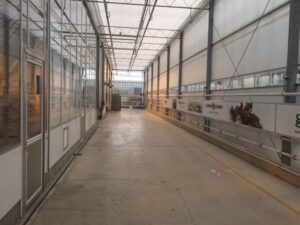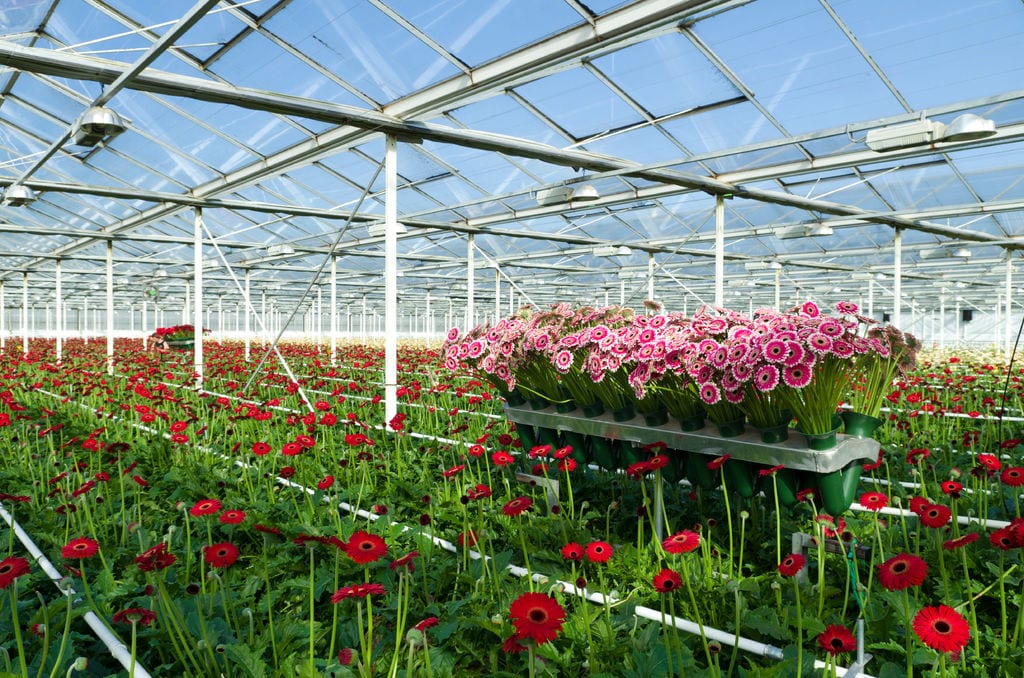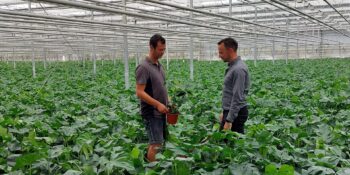The Club van 100, a project of the Greenhouse Horticulture business unit of Wageningen University & Research (WUR), ensures that Dutch horticulture retains its lead in the field of knowledge. She does this by doing applied strategic research. The Club of 100 is still growing. On June 15, the 73rd member joined: Amstel Agro, a company that deals with mineral fertilisers. MPS has been a member since February 2018. What does the Club of 100 actually do and why is it called the ‘Club of 100’ when there are no 100 members?

Jan Willem de Vries, founder of the Club of 100 and team leader of the test location (photo: Wageningen University & Research, Greenhouse Horticulture).
Actually, the “Club of 100” was just a working title. Jan Willem de Vries, founder of the Club of 100 and team leader test location at WUR came up with this title when he saw a sign hanging at a sports club bearing this name. “The term ‘Club of 100’ is used for fundraising campaigns where sponsors deposit 100 euros or where 100 sponsors are sought. In this case, the name refers to the fact that our members all deposit the same amount: 15,000 euros per year. Half of the contribution is used for research or consultancy work for a participating company and the other half comes in a joint pot.” This amount is used to ensure that the Dutch greenhouse horticulture cluster keeps an edge in the field of knowledge.
The members of the Club of 100 are suppliers and trading companies in greenhouse horticulture. Harold Beek, Deputy Director at MPS, says: “We are a member, because with this membership and our knowledge we want to contribute to the further sustainability of the sector. In addition, membership, the associated network and participating in projects provide us with knowledge and ideas to improve MPS’s products and certification standards.”

The Greenhouse Horticulture business unit of Wageningen University & Research (WUR) in Bleiswijk (photo: Wageningen University & Research, Greenhouse Horticulture).
Special cooperation
“The collaboration between the government, the business community and the research institutes makes the club special,” says De Vries proudly. “The WUR Greenhouse Horticulture carries out the research and companies use the knowledge resulting from this to improve their working methods. In addition, companies also follow the investigations closely and hook them up. In turn, we also use their knowledge from practice. I think this method is unique in the world.”
But how is it decided which investigations are carried out? The Club of 100 works like this: three times a year there is a general members’ meeting in which ideas are picked up and detailed ideas are presented. In addition, the advisory council advises on projects during the general members’ meeting. Ultimately, it is the members who decide which surveys are to be carried out and thus what the money from the joint pot is spent on. Finally, the projects are presented to the top sectors with which the money can be doubled. The top sector policy is a corporate policy of the government to stimulate the Dutch knowledge economy.
The Club of 100 is not only good as a knowledge organisation, but also serves as a network organisation
Sustainability
There are currently twelve projects underway and a total of three have been completed. Sustainability always plays a role within a project. In fact, it is a condition that a project must meet. “If a project is not sustainable in some way, it will not be carried out,” says De Vries. MPS is involved in the project ‘integral sustainability’. This project is about making various strategies in the field of integrated crop protection (Integrated Pest Management, or IPM) measurable. In this way, the environmental impact of various IPM strategies can be calculated. This allows growers to improve their strategy and it becomes transparent what the environmental impact of a certain strategy is.
A project that De Vries finds personally interesting is the project “Light and Growth”. This project includes research into the sustainable management of a crop with light to a compact and resilient crop. “For example, we know that we can make crops resistant to mildew with red light.” The club is not only good as a knowledge organisation, but also serves as a network organisation. “The great thing about the Club of 100 is that it also results in new partnerships. The informal part fulfills a very important network function in this. So it is also a place where companies network and join forces.”



